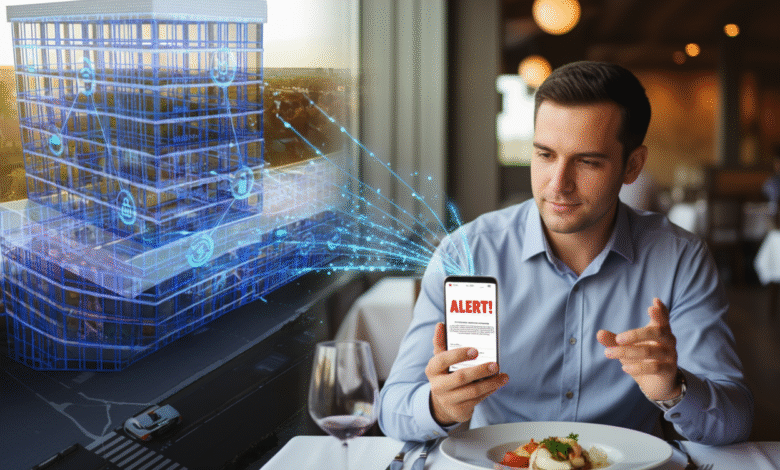Video and AI: The Future of Smart Building Experiences

▼ Summary
– Commercial buildings are now differentiated by intelligent technology rather than just location or architecture, with video playing a central role in this transformation.
– AI-powered video analytics have shifted from passive surveillance to active intelligence, enabling real-time detection of unusual patterns and automated responses like adjusting lighting or sending alerts.
– Video systems integrate with a building’s digital nervous system, connecting sensors and management systems to provide a unified real-time view for seamless coordination and optimization.
– These technologies benefit tenants through safer, more responsive experiences and help owners improve efficiency, reduce costs, and support proactive maintenance.
– Real-world applications include identifying underutilized areas in corporate campuses, managing traffic in mixed-use precincts, and enhancing safety at event venues through crowd analytics.
Today’s commercial properties are evaluated on far more than prime location or impressive architecture. The integration of intelligent technology, particularly video and artificial intelligence (AI), has become a decisive factor in creating responsive, safe, and efficient environments. Tenants and visitors now expect buildings that adapt to their needs, making smart technology the core of modern commercial real estate.
Previously, closed-circuit television (CCTV) served a singular security purpose. Now, these systems form the central nervous system of entire smart-building ecosystems. By combining high-definition video feeds with AI and real-time analytics, property managers unlock unprecedented opportunities for boosting operational efficiency, enhancing user experience, and building trust. Buildings equipped with these smart capabilities gain a significant competitive advantage in markets like Australia.
The shift from passive surveillance to active intelligence marks a fundamental change. Rather than relying on security personnel to watch monitors or review recordings post-incident, AI-driven video analytics can now identify unusual activity, predict potential problems, and initiate automated responses. This could involve sending an immediate alert to a facility manager’s mobile device when an object is left in a restricted zone.
This proactive approach allows buildings to do more than just observe; they can interact with their environment. For instance, smart video systems can modulate lighting and climate controls depending on the number of people in a room, reroute pedestrian flow to avoid congestion, or issue warnings when potential safety risks are detected. During the pandemic, these systems proved invaluable for monitoring occupancy and ensuring safe physical distancing in common areas like lobbies and elevator queues.
Think of a modern commercial building as a living entity. Video serves as its eyes, constantly gathering visual data that feeds into a broader digital network. This network, or digital nervous system, interconnects various components like sensors, access control systems, heating and cooling units, and energy management tools.
When integrated via an open digital platform, such as a Video Management System (VMS), these disparate systems provide a unified, real-time overview of building operations. This holistic visibility enables seamless coordination across different functions, from streamlining visitor access and optimizing elevator dispatch to managing crowd movement during major events.
For tenants, the benefits are direct and tangible. They experience a smoother, safer, and more pleasant daily environment. Shorter wait times, services that adapt in real-time, and a demonstrable commitment to safety all contribute to higher satisfaction and longer lease agreements.
Building owners and operators, on the other hand, gain from improved operational efficiency, reduced risks, and potential cost savings. Data on how spaces are actually used informs better planning and optimization. Predictive analytics facilitate proactive maintenance, addressing issues before they cause disruptions for occupants.
Practical applications of these advanced, open-platform video solutions are already delivering value across various settings.
On corporate campuses, intelligent video identifies underused areas, enabling smarter space planning and lowering energy consumption in vacant zones.
In mixed-use precincts, real-time analytics monitor foot traffic, helping to ensure pedestrian safety while providing retailers with valuable insights like crowd density heat maps. This data supports better space utilization, more effective marketing strategies, and more agile retail operations.
At event venues, crowd analytics allow for swift intervention in cases of congestion or incidents, guaranteeing smoother operations and enhanced safety during concerts and sports games.
These examples illustrate how technology is transforming static structures into dynamic, service-focused environments.
As property technology (PropTech) continues to advance, the demand for flawless user experiences will only grow. Video and AI are already central to this evolution, but their future potential is even greater.
We can anticipate tighter integration with digital twins, virtual models of physical buildings that are continuously updated with live data from cameras, sensors, and other systems. By incorporating video and AI, these digital replicas can simulate not only equipment performance but also human movement and interaction. This allows operators to design and manage spaces that are safer, more efficient, and highly responsive.
Future developments will also include more robust sustainability reporting and deeper integration of video data with tenant engagement platforms. All of this will be powered by reliable, real-time information streaming from intelligent, connected cameras.
The ultimate goal is a future where smart buildings do more than just house people. They will comprehend and react to their occupants’ needs. Video intelligence, empowered by AI, is the cornerstone of this new paradigm, making the vision of truly intelligent, interactive buildings an achievable reality.
(Source: ITWire Australia)





